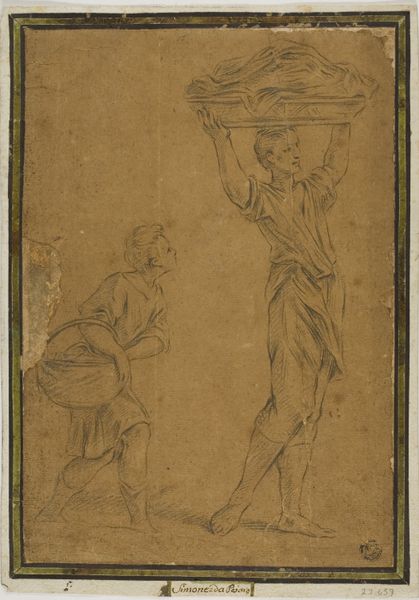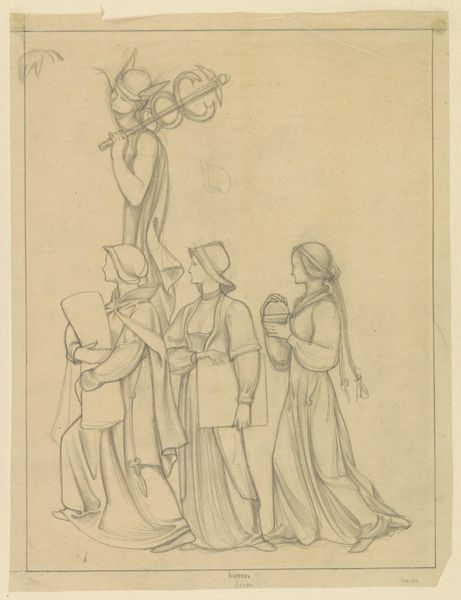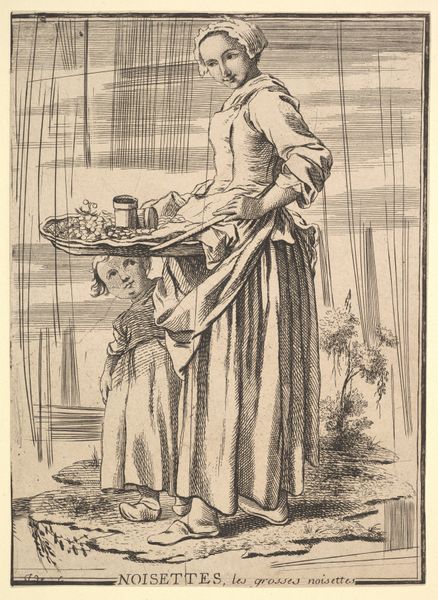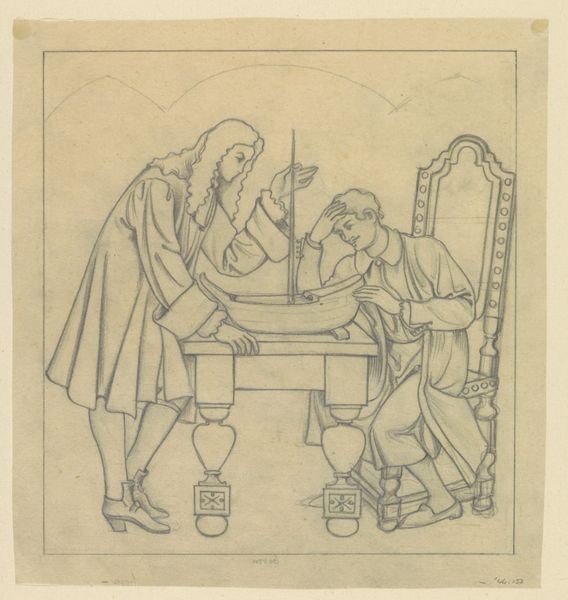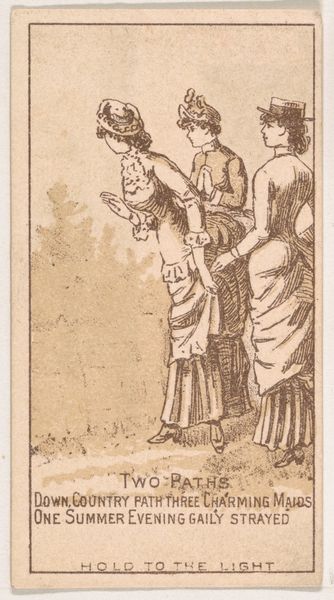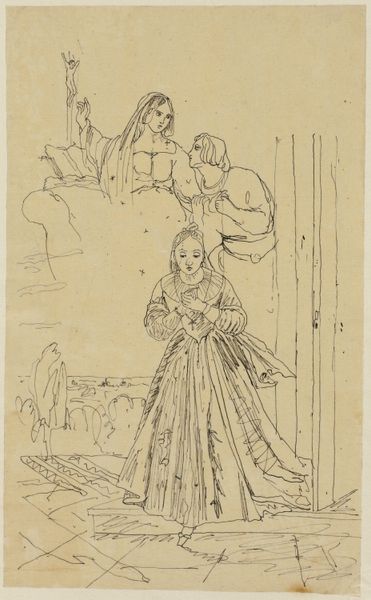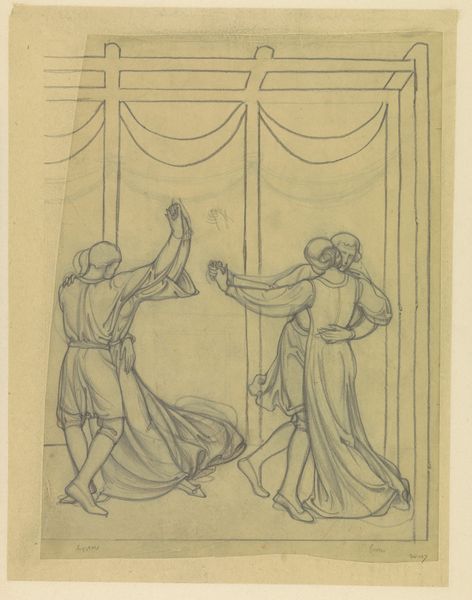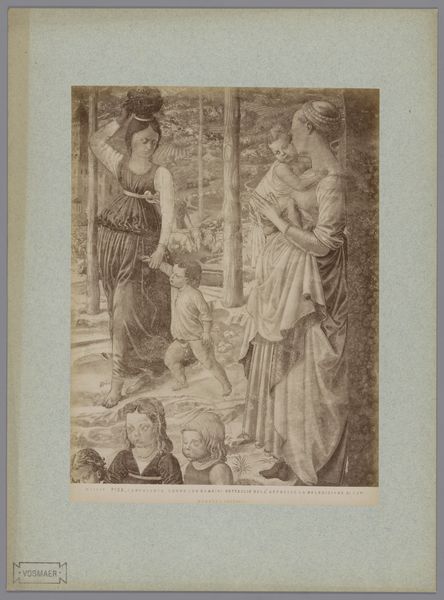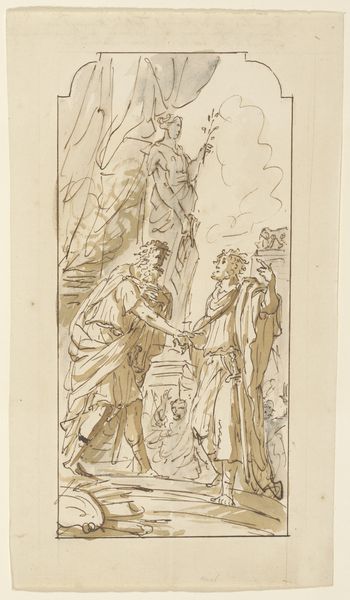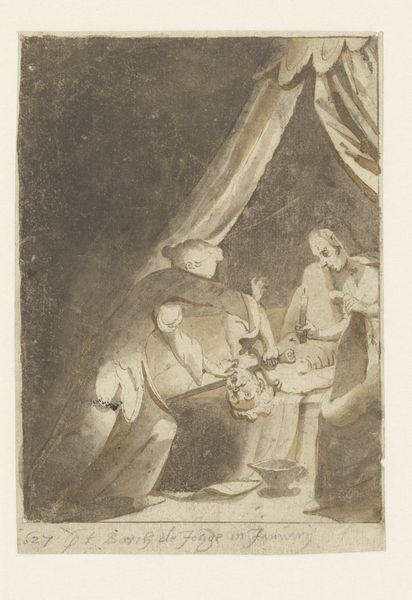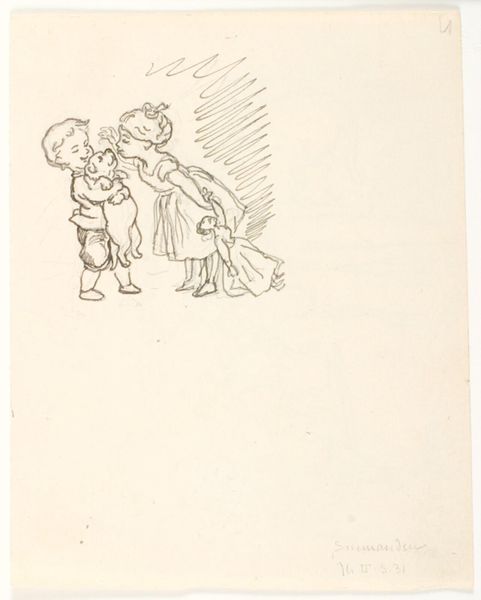
Ontwerp voor wandschildering in de Beurs van Berlage: druiven plukken 1869 - 1925
0:00
0:00
drawing, pencil
#
drawing
#
toned paper
#
light pencil work
#
pen sketch
#
arts-&-crafts-movement
#
pencil sketch
#
landscape
#
personal sketchbook
#
ink drawing experimentation
#
pen-ink sketch
#
pencil
#
sketchbook drawing
#
watercolour illustration
#
genre-painting
#
sketchbook art
Dimensions: height 320 mm, width 200 mm
Copyright: Rijks Museum: Open Domain
Editor: This drawing, "Ontwerp voor wandschildering in de Beurs van Berlage: druiven plukken," is by Antoon Derkinderen, dating from 1869 to 1925. It seems to be a study for a mural, focusing on figures and decorative grape vines, rendered in pencil. There’s a stillness to the composition, almost like a classical frieze. What structural elements stand out to you in this piece? Curator: The linear quality immediately strikes me. Observe how Derkinderen utilizes line, not to delineate form realistically, but to create a flattened, almost graphic, design. The figures, particularly their drapery, are described through parallel lines and hatching, rather than tonal modeling. This emphasis redirects our attention away from illusionistic space, and onto the surface of the paper itself. Editor: So, you’re suggesting the medium is just as important as the figures depicted? Curator: Precisely. Consider, too, the role of repetition in the design. The repeated shapes of the grape leaves, rendered somewhat abstractly, function as a decorative motif, emphasizing the two-dimensional picture plane. Ask yourself, what does that emphasis accomplish here? Editor: It almost abstracts the human form and merges figures with ornament. Are they both of equal importance in this composition? Curator: One could argue so. The formal interplay between the human figures and the stylized vines generates a sense of harmonious integration. Neither dominates; both contribute to the overall visual rhythm. Notice how the ladder and the vines form a frame for the figures. Editor: It gives order and directs the viewers gaze. I see now the formal logic through line and the flat picture plane that unify all the components. Thanks, I learned a lot! Curator: A careful study of line, surface and the repetition is vital here. These provide an interesting framework for analysing this beautiful work.
Comments
No comments
Be the first to comment and join the conversation on the ultimate creative platform.
